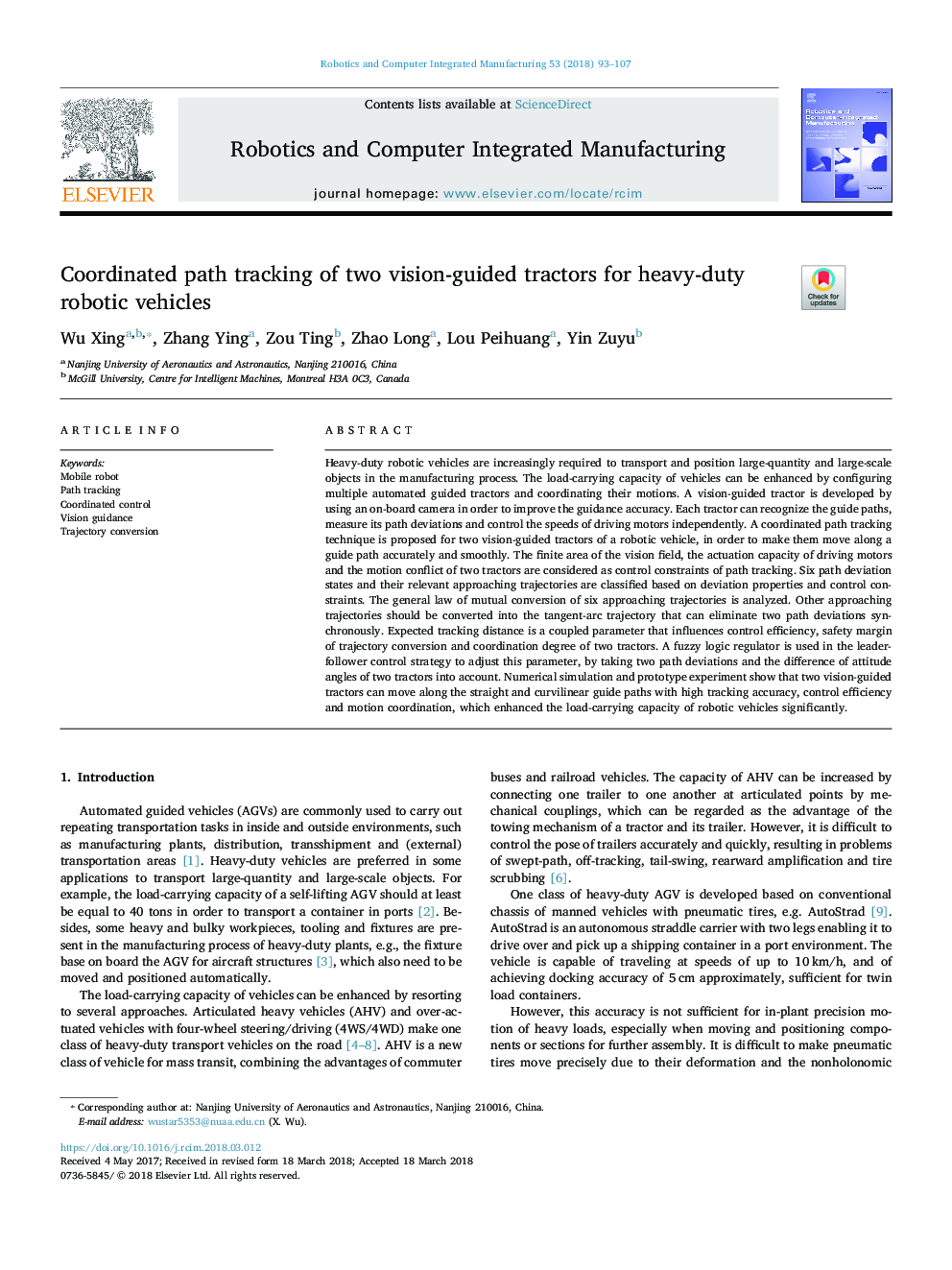| Article ID | Journal | Published Year | Pages | File Type |
|---|---|---|---|---|
| 6867756 | Robotics and Computer-Integrated Manufacturing | 2018 | 15 Pages |
Abstract
Heavy-duty robotic vehicles are increasingly required to transport and position large-quantity and large-scale objects in the manufacturing process. The load-carrying capacity of vehicles can be enhanced by configuring multiple automated guided tractors and coordinating their motions. A vision-guided tractor is developed by using an on-board camera in order to improve the guidance accuracy. Each tractor can recognize the guide paths, measure its path deviations and control the speeds of driving motors independently. A coordinated path tracking technique is proposed for two vision-guided tractors of a robotic vehicle, in order to make them move along a guide path accurately and smoothly. The finite area of the vision field, the actuation capacity of driving motors and the motion conflict of two tractors are considered as control constraints of path tracking. Six path deviation states and their relevant approaching trajectories are classified based on deviation properties and control constraints. The general law of mutual conversion of six approaching trajectories is analyzed. Other approaching trajectories should be converted into the tangent-arc trajectory that can eliminate two path deviations synchronously. Expected tracking distance is a coupled parameter that influences control efficiency, safety margin of trajectory conversion and coordination degree of two tractors. A fuzzy logic regulator is used in the leader-follower control strategy to adjust this parameter, by taking two path deviations and the difference of attitude angles of two tractors into account. Numerical simulation and prototype experiment show that two vision-guided tractors can move along the straight and curvilinear guide paths with high tracking accuracy, control efficiency and motion coordination, which enhanced the load-carrying capacity of robotic vehicles significantly.
Related Topics
Physical Sciences and Engineering
Computer Science
Artificial Intelligence
Authors
Wu Xing, Zhang Ying, Zou Ting, Zhao Long, Lou Peihuang, Yin Zuyu,
